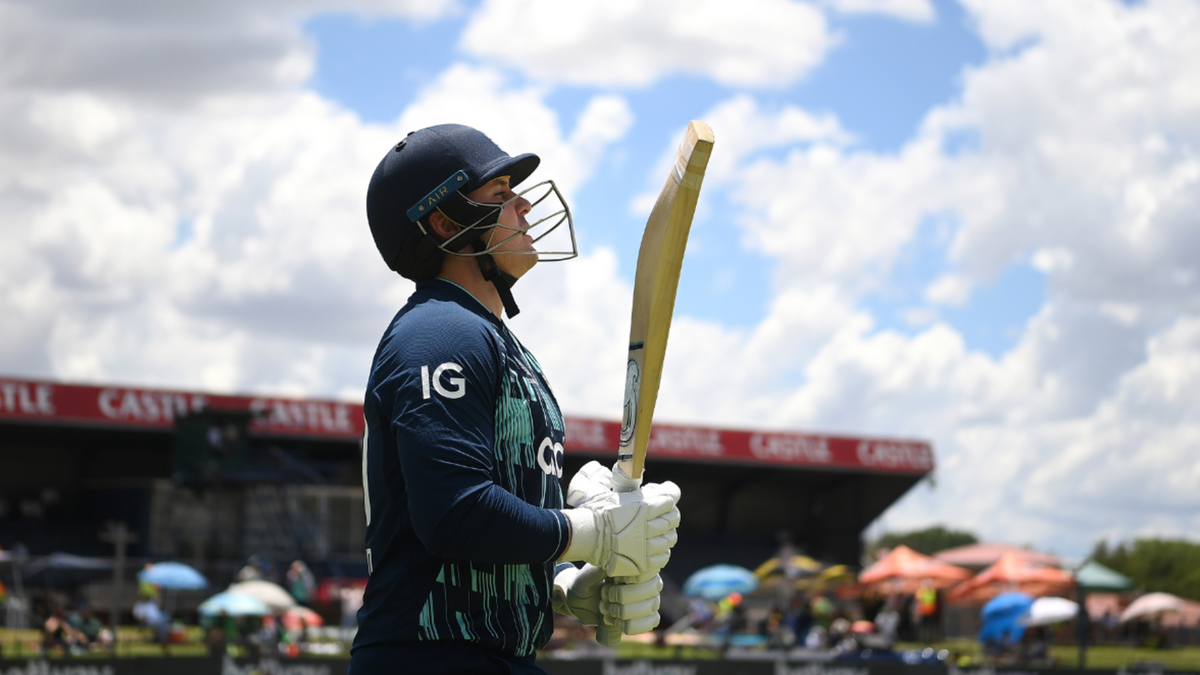
Jason Roy is part of the foundations on which England built their white-ball revolution. But now, short on form and already out of their T20I side, the blockage he’s causing is actively harming their World Cup chances.
Subscribe to the Wisden Cricket YouTube channel for post-match analysis, player interviews, and much more.
England’s Harry Brook dilemma is getting more pressing with each innings he plays. While his onslaught against New Zealand in the second T20I may have felt pointed towards the selectors, it was simply just another innings indicative of what everyone already knows he is. But, to get him into their World Cup squad, someone has to miss out.
The two most realistic options to drop are Dawid Malan and Jason Roy. By the metric of recent record in ODI cricket, Malan’s four hundreds in the last 14 months give him the edge over Roy, whose form has been patchy at best.
Overall figures don’t belie just how inconsistent Roy has been. This year, his ODI average from six innings is 46.33, but that comes largely from two big hundreds, with three single figures scores and a 19 making up the rest.
Feast or famine has been a feature since the beginning of Roy’s international career. He was dropped at the back end of the 2017 summer after crossing into double figures only twice in ten innings, but was brought back thanks to Alex Hales’ involvement in the Bristol fracas. On return, he scored 84 and 94 in the final ODIs of the summer.
During England’s post-glory hangover period in 2020, Roy averaged 12.87 from eight innings and scored his first ODI century in 18 months against India in March 2021. His subsequent ODI innings have been punctuated by individual innings of brilliance like a century against the Netherlands and a blistering ton against South Africa in January, but the returns haven’t been at the same level or frequency as the 2019 benchmark.
His T20 woes have also made the infrequency of his ODI returns more concerning. A difficult summer in 2022 meant he was dropped before England’s T20 World Cup campaign in Australia, and his franchise form since has been patchy. In the SA20 earlier this year, a third of his 171 runs came from one of his 11 innings. While a better IPL campaign followed, his only fifty in the 2023 Hundred was sandwiched between two ducks, with a third coming in the final.
Roy has played the most ODIs of anyone for England since 2019. That he’s had enough time to demonstrate his dwindling powers is perhaps part of why he’s the one out of all England’s World Champions whose place is least secure. Regardless, the extremity of Brook’s talent has exacerbated those concerns. When faced with what they could have over what they currently have, anything less than Brook playing every game of cricket possible for England seems a letdown.
Equally, England seem to have selected Malan over Brook to mitigate the continuation of Roy’s poor form into the World Cup. Not picking someone as exceptional as Brook while selecting someone you half-expect to drop during the tournament makes the omission even more absurd.
There’s no perfect solution to the dilemma. Roy may come into the World Cup and transform back into the force he was in 2019. Brook may find his way into the squad and replicate the torrid times he had in the IPL. But, if England want their best six batters in their World Cup squad, on current returns, Roy isn’t one of them.








